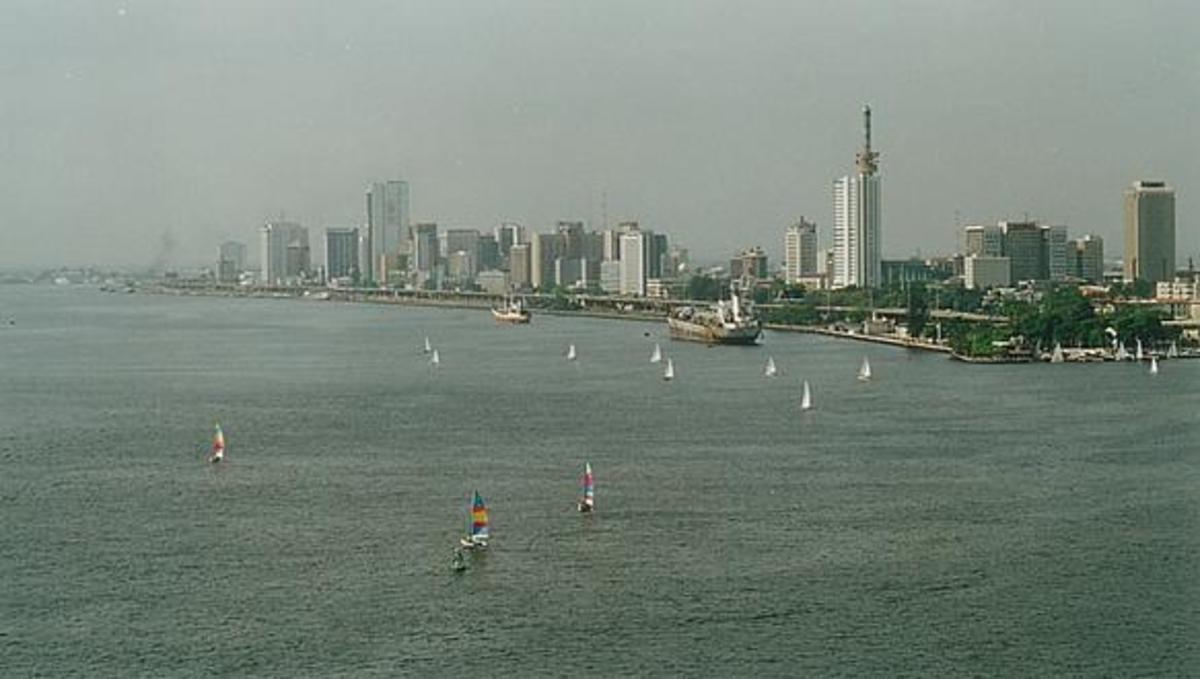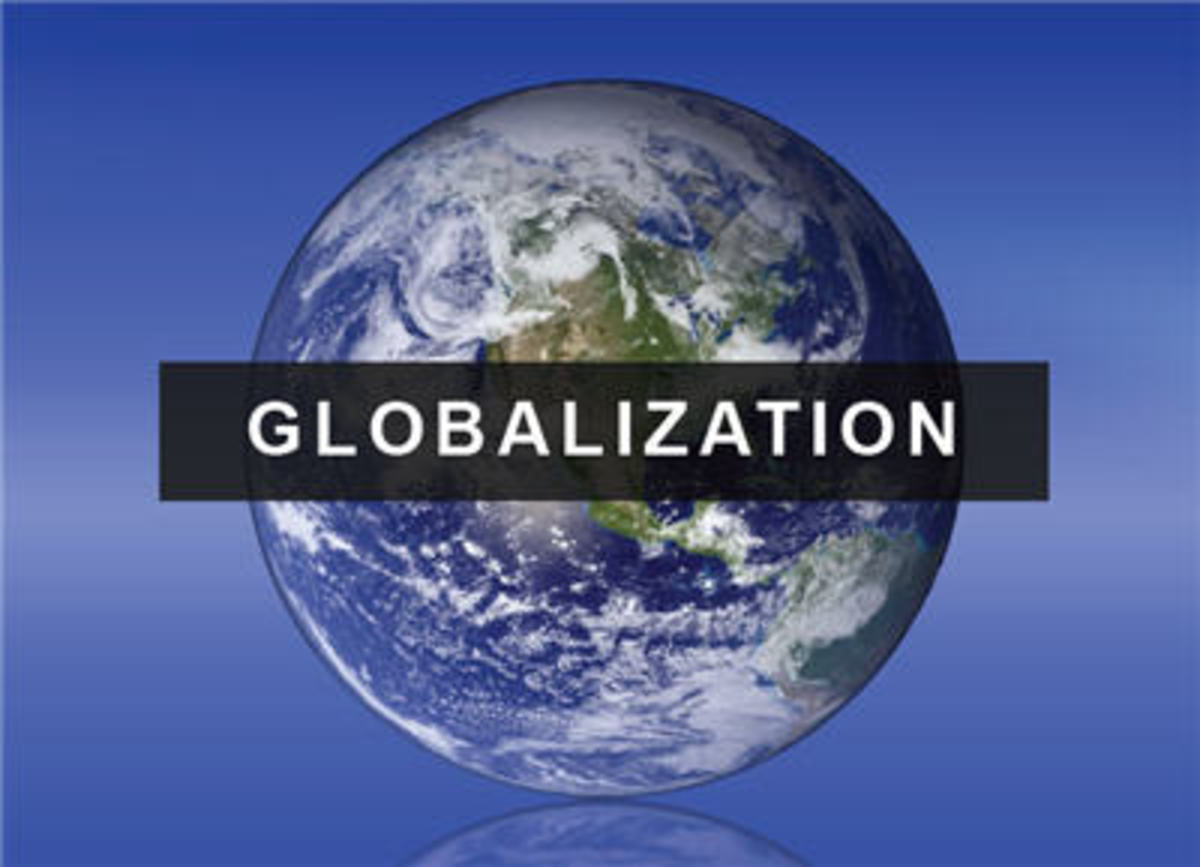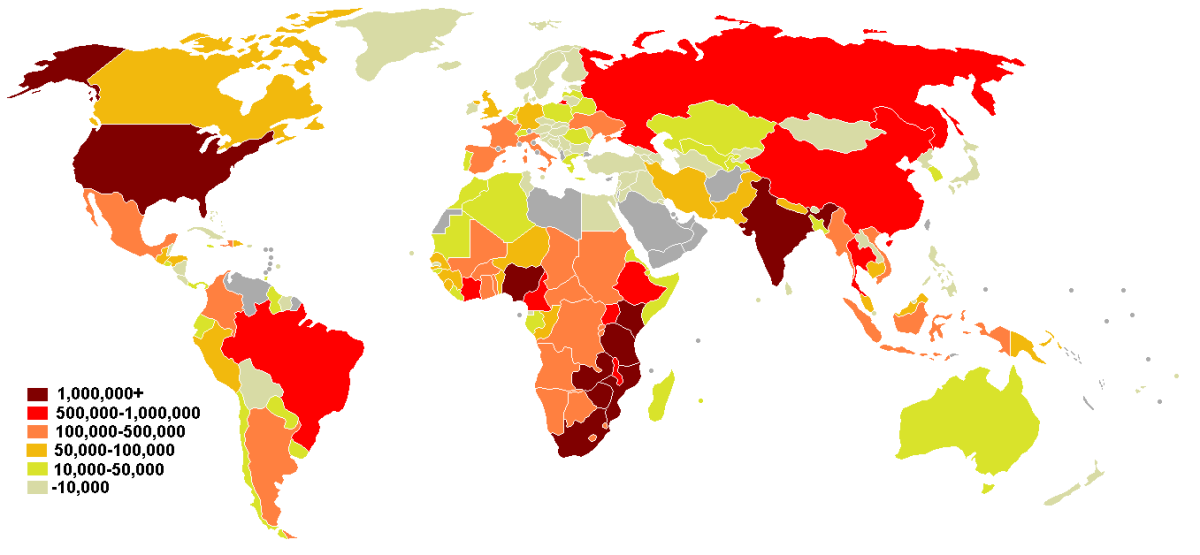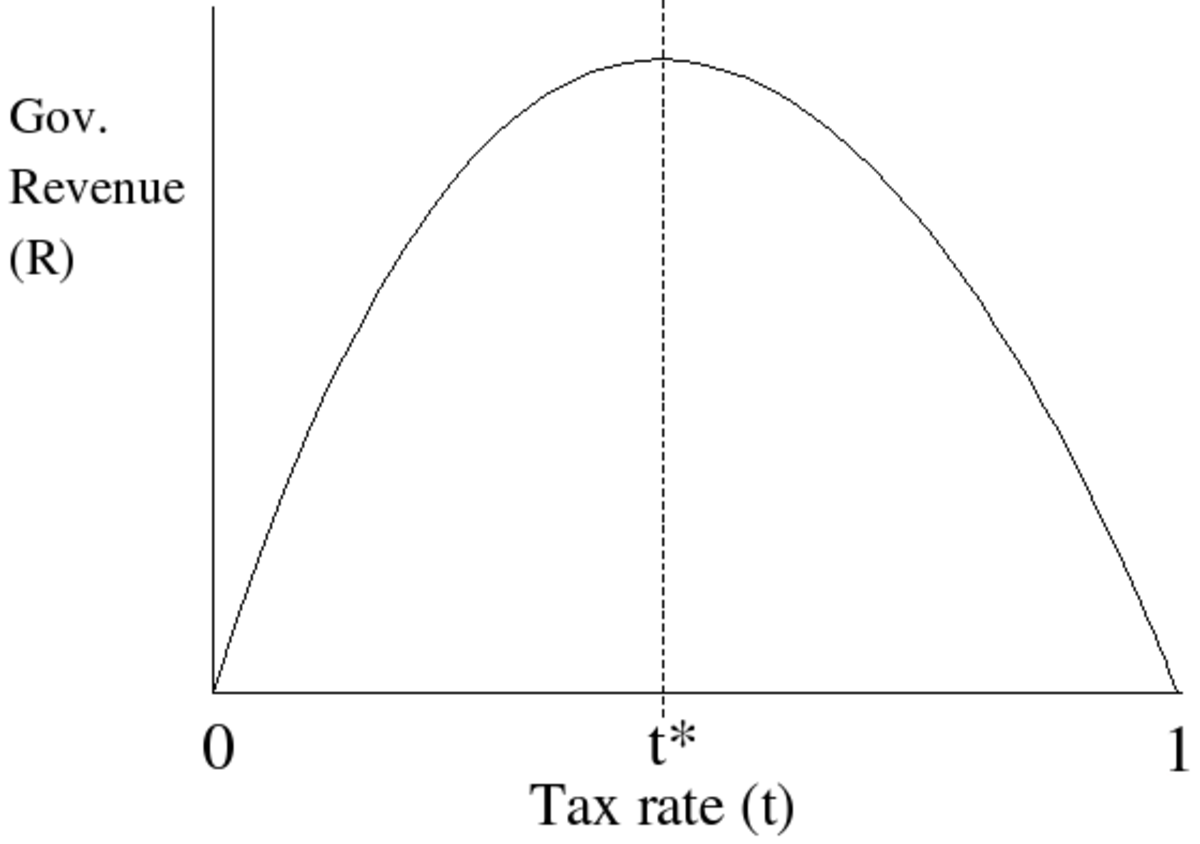Framework of Development for Developing Countries
Developing countries must define their need and want, and consolidate their power to become developed
A country is run with the use of several frameworks. One is for use to earn foreign exchange reserves. Another is for use in exploiting natural resources. Another is for application in rice production. Still another is to employ in the accumulation of capital and setting up infrastructure for the manufacture of capital goods.
For example, one developing country, to earn foreign exchange reserves grew sugar cane to export sugar. When this program was started, the price of sugar in the world market was good. When its sugar was ready for export, the price plummeted. To exploit its copper reserve, a developing country allowed the entry of a copper firm of a foreign developed country. This mined the ores, then moved them for processing to the parent firm. However, this copper firm was sloppy in disposing of mine tailings that polluted marine life. We want a framework that works in attaining our objective.
A framework must be chosen with a lot of deliberation. Can a framework be modeled after a biological process? Let’s try. This discussion is a journey in discovery.
Let’s use the process of the initiation and development of colon cancer.
The functional entities are cell, polyp, chromosome, gene, allele, mutation, cell cycle, mitosis.
Let’s use the sporadic colon cancer, one where mutations are caused by free radicals.
Colon cancer starts with the mutation of two alleles of the gene APC (adenomatosis polyposis coli) of a cell. This cell escapes the switch, p53 gene, in two checkpoints of the cell cycle, undergoes mitosis and forms two cells, each cell containing gene APC with both alleles mutated by free radicals and X-rays. Two alleles make up a gene. A cell with even just one mutation in its genes is called polyp, a benign tumor that is a precursor of colon cancer. A polyp that sustains 5 to 7 mutations more in its genes turns into cancer (Cummings, M. Human Heredity, Principles and Issues. 2009:292-296).
The mutations in successive order are as follows: (1) mutation in one allele of k-ras proto-oncogene, (2) mutation in two alleles of gene DCC, (3) mutation in two alleles of gene DCA, (4) mutations in two alleles of gene DPCA, (5) mutations in two alleles of gene V18-1, and (6) mutations in two alleles of p53 gene. All these 6 mutations in addition to the mutations in two alleles of gene APC in the same polyp turn it into colon cancer.
These mutated genes have relationships with each other; they combine to initiate the formation of adenoma (intermediate growth with fingerlike projections), add to the progress of adenoma. One mutation in k-ras transforms the polyp into an adenoma.
P53 gene controls the development of colon cancer in that it is the switch. If not mutated, it stops the cell cycle of the APC in two checkpoints in the interphase, one at the transition from G1 to S and another at the transition from S to M (mitosis). Mitosis or cell division results in the growth of the lump composed of adenoma then cancer.
Let us make classes out of the genes, and add control, then cancer:
Mutated genes
APC, k-ras proto-oncogene, DCC, DCA, DPCA , V18-1
Control
p53 gene
Cancer
Colon cancer
Outcome
Stage I, "spreads into mucus layer of colon;" Stage II, " spreads to outer layer colon layers;" Stage II, "in colon muscle:lymph involvement;" Stage IV, "in one or more distant organs;" ("Stages of Sick." Time. June 27,20011:40); death.
We find that colon cancer is a term for an interpretation. The thing called colon cancer consists of fast dividing cells (with mutations as listed above) that grow into a lump which breach the cell matrix confining them. Cancer cells invade neighboring normal cells and infect them. Colon cancer can be seen as an indicator.
We can transform the above classifications into:
Resources; control; indicator; outcome
Control also means power. Power is the ability to attain an objective, according to Bertrand Russell, Nobel Prize winner for Literature (Philosophy) in his book “Power.”
I will not explain how the biological model graduates into the framework that follows. It was a jumping board only.The benefits derived from it are: concepts (resources, control, indicator, outcome). It highlights the idea of control whose flip side is power. Let's see how Power works.
Resources
Federal budget
Power
President Bill Clinton (Democrat); Vice president Al Gore (Democrat); Senate (Gore, presiding officer, Democrats, Republicans); Democratic Party; Republican Party; House of Representatives (Democrats, Republicans)
Indicator
$500 billion
Outcome
Deficit reduction
Intended outcome: Inflation is controlled or lessened resulting in lower prices. People would have the means to refinance mortgages, buy cars, houses, and other appliances resulting in expanded economy. Expansion of economy would increase employment.
Budget deficit means that the government spends more than it earns for the period. To fill the gap between income and expenses the government would borrow from the public (issuance of treasury bonds) and merchant bankers. If the government overspends, so much money goes into circulation that would trigger inflation resulting in high prices, among others. Inflation reached double digits during the Vietnam war because the government spent so much for it.
Let us say that one campaign promise of Clinton was to reduce deficit in government spending and he got elected for it. So the people agreed on deficit reduction. Clinton pegged the deficit reduction package at $500 billion.
Let’s focus now on power. Clinton’s objective was for Congress to pass his proposal (in the form of a bill filed in Congress, sponsored by a Democrat). When it will have been passed by the House of Representatives, and by the Senate, then by the Joint Conference, it will go to Clinton. Clinton will sign it and the deficit reduction will become law. Clinton’s objective will be achieved. Suppose the process went as follows:
The deficit reduction package proposal of Clinton in his first term was passed by the House of Representatives by a very narrow majority vote: 218-216 (Woodward, B. The Agenda. 1995:354). Some Democrats voted against it, notwithstanding the fact that Clinton and Gore were Democrats.
In the Senate, before the bill went up for vote four Democrats told Clinton they will not vote for his deficit reduction package. So even if Gore, being a Democrat and friend of Clinton, was sure to vote for the package, it will not pass through the Senate because the number of votes was short by one. In that case, Clinton will not attain his objective. His power was deficient.
You see here power at play in a democracy. Clinton and his Cabinet members, other Democrats, lobbyists, will try hard to convince rebel Democrats, convince some Republicans, to vote for the package. Forms of power will be employed, except perhaps naked power which is illegal.
Power is the ability to attain an objective wrote Bertrand Russell. He classified power into “naked power”, one that uses force; “priestly power” one that employs faith and magic; “executive power” one accruing to position of authority;”persuasive power” one that uses persuasion, and “economic power” one that uses means of exchange to acquire goods and services. Power is a quantitative concept.
Russell wrote that he used persuasive power when he tried to convince us that our knowledge of the external world is through senses. Hitler and Marcos used naked power. Naked power was applied on President Lincoln and President Kennedy. The priest and, to some extent the medical doctor, use priestly power. The president of a corporation uses executive power. Money begets power.
What are the tests to use? Is this framework reliable? "Reliability refers to the consistency or precision of that (framework) over time and among users" (Gianakis, G.A. and C. P. McCue. Local Government Budgeting. 1999:63, parenthetical mine). Reliability can be rechecked with events in the past, present and in the future. Is the framework “resources-power-indicator-outcome” valid?
Validity is a test for mathematics, so it is not applicable for this framework.
Truth is a test for a statement of fact. It is not applicable for this framework. Does this framework work?.
We started with modeling after the initiation and development of colon cancer. Let's use one that has served medicine. Robert Koch, who discovered the cause of tuberculosis and vaccinated against it, came up with the Koch’s postulates that are used to discover the cause of a microbial disease with the purpose of controlling the microbe and healing the patient. Koch’s postulates are based on observations of microbes, human intervention and patients. Koch’s postulates work, in the sense of pragmatism.
Take a look into Koch’s postulates (Encyclopedia Britannica 2009), to wit:
- “A specific microorganism is always associated with a given disease.”
The bacterium Streptococcus pyogenes is always found in a person suffering from rheumatic fever.
- “The microorganism can be isolated from the diseased animal and grown in pure culture in the laboratory.”
Get specimens from one having rheumatic fever; grow them in a medium that supports the growth of S. pyogenes only. Other microbes will die, only S. pyogenes will live, thus in this culture you will have specimens of pure S. pyogenes.
- “The cultured microbe will cause disease when transferred to a healthy animal.”
Get specimens from this pure culture of S. pyogenes and infect a healthy person (who volunteered for this demonstration). He gets sick of rheumatic fever.
- “The same type of microorganism can be isolated from the newly infected animal.”
Get specimen from the same patient who was infected with S. pyogenes and culture it again. Your culture consists of S. pyogenes, and no other microbe.
Koch's postulates are a set of rules to identify a microbe that causes a disease. This set of rules does not fail in this task. It is applicable for any disease that is caused by a microbe. It can also verify whether the disease is caused by a microbe or not. For example, it can identify S. pyogenes as the cause of rheumatic fever but it cannot identify the cause of rheumatic heart. That means that rheumatic heart is not caused by a microbe. In fact, rheumatic heart is caused by free radicals. However, conventional medicine ignores free radicals as causes of disease that is why it tags rheumatic heart as an autoimmune disease that is caused by an immune system which is confused. But that is another story. (I have a Hub "Free Radicals (Unpaired Electrons) in Alternative Medicine.")
The framework we are formulating is one that works for use to establish relationships, rules and conditions within which to pursue outcomes.
It is not a vehicle for the pursuit of an outcome. That vehicle is a policy, or a law, or a program, or a project, or medication. For example:
Resources
Ciprobay (antibiotic)
Power
Doctor; patient
Indicator
Pus/WBC: 0 to 1 microbial count
Outcome
Person free from infection
I once had a recurrent urinary track infection. My physician used to give me a broad spectrum antibiotic, one that kills several microbes. But my infection kept recurring. Whereupon, to treat me, the doctor had to identify the microbe that caused my infection. He got a sample of the microbe through my urine. He cultured the microbes from my urine. He identified the microbe. He prescribed for me an antibiotic, Ciprobay, that is specific for this microbe. I was treated of urinary tract infection.
Which condition should fall under Resources? under Power? under Indicators? under Outcome? These pigeon holes show relationships. There are relationships among factors in Resources and in Power. Rules are set especially among conditions and established relationships. For example, an increase of 1% in interest rate produces a 3% inflation. So, the rule is if you want 3% inflation, raise interest rate by 1%.
For example, to pursue what we want we use a program. We want our town to be safe from polio. We assign the job of bringing about what we want to our health service. We allocate $100,000 for this job. We set a target as zero infection.
Let's plug this program into our framework.
The allocation falls under Resources. The health service falls under Power. Our target falls under Indicator. Our want falls under Outcome..
Given that resources are available. If none or lacking, they should be procured. Procurement has its own dynamics.
Actors juggle for power. Power transforms. Actors may have a constitutional mandate, may belong to an institution, voluntary, grabbers. There are processes and relationships in Power that may be violent or peaceful. Power is a category for people with a will, or a group of people with a will, like Congress, or Supreme Court. It is not for inanimate items, like hydroelectric dam that converts mechanical power to electricity. Hydroelectric dam could be placed under Resources, or Indicator, or Outcome.
Indicators are contestable but at least there must be some consensus about them. Indicators show relationships that may be obvious or that could be found out by experiment or quasi-experiment, or based on experience or hypothesis. They could be dictated. Process is involved in coming up with indicators.
Outcomes are debatable. They can be undefined; hidden; want; different from the want, may be a need; may be different from the need; may be in the interest of the people but not what they want or think they need. They could be dictated. They could be rights. Process is also involved in formulating outcomes.
A framework is useful in classifying factors; showing relationships; rights; identifying causes and effects; evaluating and monitoring outcomes, legislation, policy, program, project.
(I have a Hub "Why Developing Countries Will Take a Long Time, Or Never, To Become Developed.")
Let us try multiple resources, power, indicators, and outcomes.
Resources
Federal budget; salary deduction from employees; economic stimulus package
Power
Office of the President; Congress; American Medical Association; health maintenance organization (HMO); members of HMO; other insurers; pharmaceutical industry; hospitals; health providers; medical professionals; Medicaid; Healthcare
Indicator
$100 billion for health care reforms; $16 billion for economic stimulus package
Outcome
(Health care reforms not passed); Higher employment rate; Higher income; 4.7% economic growth.
With Hilary Clinton as its team leader, the Health care package proposal did not pass in the first year of Clinton in the White House because the stimulus package and deficit reduction proposal were priority. There were roadblocks in Congress that considered the $100 billion health care package as too high.
HMO, medical associations, and insurers lobbied against health care reforms. The economic stimulus package and the deficit reduction package relegated the health care proposal to the back burner. If the health care proposal were pushed in combination with either the stimulus package or the deficit reduction package, both would fail, the Clinton white house had calculated. The combination of stimulus package and the deficit reduction proposal would fail either.
It would seem that these Powers would lobby against health care reforms anyway no matter how small or how big the proposed package. President George W. Bush (Republican) planned to add $153 billion for health care benefits through 2011. Democrats, and some Republicans, saw it as "inadequate." (Lemonick, M.S. and A. Park. "New Hope for Cancer." Time. May 28,2001:49).
Good for President Obama (Democrat), he just got his health care reforms.
Congress passed, by a vote of 243 in favor to 183 against, the economic stimulus package of Clinton (Woodward, B. The Agenda.1995:170).
How this framework works in a developing country, like the Philippines:
Resources
Land; palay seeds; water; fertilizers; loans; labor; carabaos; sugar cane; onions; foreign exchange reserves
Power
Office of the President (Cabinet); Congress; World Trade Organization; tenants; farmers; multinationals; former colonizers
Indicators
120 cavans of palay per hectare; 30 piculs of sugar (figure for sample on); 5 tons of onion per hectare (figure for sample only); 10 million cars
Outcome
Intended outcome:
Self-sufficiency in rice; more income from onions, more income from sugar by exportation; sufficient means of transportation.
Actual outcome:
Importation of cars that drain foreign exchange resulting in unfavorable balance of trade. Domestic production of rice is not sufficient for Filipinos and shortage is filled with imports. Sugar that used to be a top export of the Philippines, now could not be exported owing to low price of beet sugar; beet sugar competes with the local produce. Filipino farmers have a hard time selling their onions owing to lower price of imported onions.
The target rice production per hectare materialized but the total produce was short. Insufficient rice production is not a matter of insufficient land, technology, or industry of farmers. It is a matter of land tenure, where large tracks of land are owned by landlords with farmers as tenants. Land reform is a powder keg in the Philippines. Congressmen will keep quiet about land reform because most of them are feudal lords. Past presidents have successfully protected land of which they are part owners from the land reform program. Here, power to attain the objective of rice sufficiency is not fully applied. The tenants have insufficient power. Power is dissipated as there is conflict between the president and congress, on the one hand, and tenants, on the other.
Sugar cane has a competitor in the beet sugar. The price of beet sugar in the world market is lower than that of cane sugar because beet growing abroad is subsidized. Subsidies in farming are regulated by the World Trade Organization. Without subsidy, sugar cane farmers in the Philippines cannot compete in the world market. France, a developed country, produces beet sugar.
The Philippines has no infrastructure for car manufacture. Colonial and neocolonial policies of the United States had blocked development of car manufacture capability. Toward the end of his term, President Fidel V. Ramos opened negotiations with Prime Minister Mahatir of Malaysia for a joint production, not mere assembly, of Proton cars in the Philippines. Malaysia produces Proton cars.
Due to constitutional limits, with the president allowed only one term, President Ramos could not follow through the car production capability build up.
Succeeding presidents have not shown interest in heavy equipment or capital goods manufacture like computer production except as assembler for multinationals.
Onion production in the Philippines might be a little more costly than in other countries with an advantage of economics of scale. Filipino onion farmers have a hard time selling their produce because onions come in from abroad owing to World Trade Organization provisions.
In the lower levels, there are power plays in allocation and mix of resources; in setting indicators and in defining outcomes.
Generation and application of power may consist of upheavals like people power, rallies, pickets, and boycotts. Foreign countries intervene in the affairs of their former colonies. The United States told Marcos to "cut clean" when People Power had shown that he could no longer govern. A new government must be set up in the Philippines such that it is capable of repaying loans to foreign lenders. It had among its outcomes the restoration of democratic form of government. It has also resulted in the restoration of the old ruling class. The restructuring of society and nurturing of social justice have been stalled.
Assuming that resources are available, actors in power will define intended outcomes and set indicators. Given indicators and intended outcome but resources are wanting, actors in power will decide how to obtain resources. Power will juggle resources to attain objectives. Intended outcomes may come about. Sometimes unintended outcomes crop up.
Roadblocks are usually put up in power. Resolution of roadblocks in power depends on the form of government. A dictatorship rams through its designs. A democracy will go through power brokering. A former colony that is still under the influence of its former colonizer will get the latter's approval. A country with constitutional limits imposed by a conqueror must stay within limits. Another country that is a virtual dictatorship by definition and practice with a government that is legislature, executive and judiciary may interpose its temporal doctrine, like reproductive health, on other countries. This country wields priestly power.
Russell said that power plays a major role in modern society. Power chooses the framework of development to employ.
Power shows in the setting of agenda in a meeting between two persons, or in a meeting of an organization, even in a negotiation between two nations. Two persons may agree on the agenda before they discuss. If one raises an issue not included in the agenda the other can refuse to discuss it. The head of an organization, alone, usually sets the agenda of a meeting or in consultation, but still approves the agenda. During the meeting, an issue not included in the agenda cannot be discussed unless the chairman approves it or a majority in attendance approves it.
The United States initiated the rapprochement with China, showing more interest in a rapprochement than China did. At the start of the 20th century, the United States already had eyes on the Chinese market. It is said that if the Chinese increased the hemline of their dresses even by just one inch, the United States would have a sure market for all its cotton export. It annexed the Philippines, that had just gained its freedom from Spain through a revolution, as a jumping board. The United States had a misadventure in supporting feudalism in China and supporting Chiang Kai Shek of Nationalist China. When Mao's regime drove Chiang Kai Shek to Taiwan the United States had no recourse but to recognize China as a nation rather than Taiwan.
In their rapprochement treaty, China had the upper hand during the negotiation. Henry Kissinger, then national security adviser to Nixon, who spearheaded the ping pong diplomacy prepared a draft of the treaty showing the common interests and features of their countries. Premier Chao Enlai of China rejected Kissinger's draft. Chao Enlai wanted his draft that specified the differences between the two countries. Kissinger marveled at the idea, he said so in his first memoir after his stint as national security adviser.
In 1979, China was considered as a developing country as Deng Xiaoping adopted some capitalist features into China's economy. By 2010, China's economy had surpassed that of Japan.
A framework can be used to analyze events that look sporadic, random or scattered and forgettable. Take the Lozada hullabaloo.
The Philippine Senate was conducting a hearing on the alleged ZTE deal. Accusations were flying that the president and an election commissioner obtained grease money from a foreign loan for use to install a computer system in the country. One alleged witness, Mr. Lozada, was called to testify. Before his scheduled testimony he was in Hong Kong. At the airport, upon his arrival back to the Philippines, he claimed that he was escorted by military uniformed men who were polite and took him to unannounced routes in the night he was supposed to go home. After the traveling around he was deposited, unharmed and unscuffled, in a school campus of the religious. The involvement of the religious, who stood up for Lozada, played up the hullabaloo. Such support could be owing to the fact that Lozada was a graduate of a sectarian university; he holds a degree in engineering. Mr. Lozada got a lot of media exposure. In his testimony he could not prove anything because he could not pinpoint a money trail much less saw money being handed. He accused the secretary of the Department of Environment and Natural Resources (DENR) as a conspirator in his "abduction" at the airport but could not prove it. The mastermind of his "abduction" could not be established. His testimony was forgotten as a hearsay. No charge in court was filed against anybody whom he accused of involvement; no charge was filed against him. He did not file any charge against anybody in court either. In the last presidential election he ran for the senate, perhaps thinking or his supporters might have thought that the hullabaloo made his name easy to pick among candidates. He lost. He disappeared from public memory. What could one make out of this Lozada hullabaloo? What game in town deserved so much hoopla? Let' s plugged in some data into the framework.
Resources
Pay off; Jatropha; Lobby money
Power
Lozada; Senate; Speaker; jilted bidder for the computer program; Religious; Mass media; Military; President (Cabinet members); Commissioner; multinationals
Indicator
Identity of wrongdoers
Outcome
Expected outcomes: Stop pay off; abrogation of computer loan deal; Impeachment of the president and commissioner; Removal from office of the department secretary;
Outcome hidden from or unexpected by the public but designed by the multinationals: Elimination of competition to fossil fuel
It seems that the Lozada hullabaloo was simply that. No trail of a pay off. The president and of the commissioner were vilified in public opinion. Before an impeachment case against him could prosper, the commissioner applied for and got an early retirement that entitles him to service benefits. Another aftermath was a break between the speaker of House of Representatives and the president who belonged to the same political party. That break was played out between the House of Representatives and President Gloria Macapagal-Arroyo, presumably, from the rejection of the son of the speaker as a bidder in the mothballed computer project. The rift installed a new speaker. [The business firm of the son was new, had no required resources, his father was with the president in China to negotiate for the loan]. The loan was abrogated. The department secretary was not dismissed from office. The president remained in power.
But what were the big games in town? We have listed something innocuous in the Resources like jatropha because Lozada had something to do with it. He was the president of a government corporation involved in growing this tree whose fruits give extracts that can be esterified and turned into biodiesel. It can substitute for some amount of fossil oil. In other words, it gives some competition to fossil oil. At that time large tracks of public land, in the jurisdiction of DENR, had been planned for planting to jatropha. If projections materialized importation of a large portion of fossil fuel could be dispensed with. Now, some pictures become clearer.
One can conjure up a chain of events. Some unseen lobbyists fueled the Lozada hullabaloo to take him out from his position as jatropha production president, douse water on government enthusiasm resulting in a scuttled biodiesel production program. This has been an outcome, undefined and unsuspected by the public. Fossil fuel is always a big game in the Philippines because this country is a net importer of large amount of this commodity. It packs political power: fossil fuel has been excluded by law from price control. Its price is dictated by market forces.
Such an outcome had been attained. Nobody was pinpointed as a wrongdoer, or charged in court. Lozada is out of the biodiesel production program. Fuel oil businesses have been above suspicion. The religious sect had been chosen as custodian of Lozada because it would be above suspicion. All quiet when Lozada lost in his senatorial bid (apologies to "All Quiet in the Western Front," the movie).
This framework can be used for prediction. Take the recent Libya-Ghaddafi episode.
Resources
Rebel financing; foreign assistance; lobby money
Power
Libyan rebels; foreign intervention; lobbyists
Indicators
Ghaddafi out; new government in
Outcome
Intended: Libya breathes with more freedom
Predicted outcome: Merchant banks will set up shop in Libya
This idea of merchant bank is not original with me. I read it somewhere. During the 40-year reign of Ghadaffi, no merchant bank could do business in Libya.
Anyone can come up with his/her own framework of development. Its essential feature is that it works.










